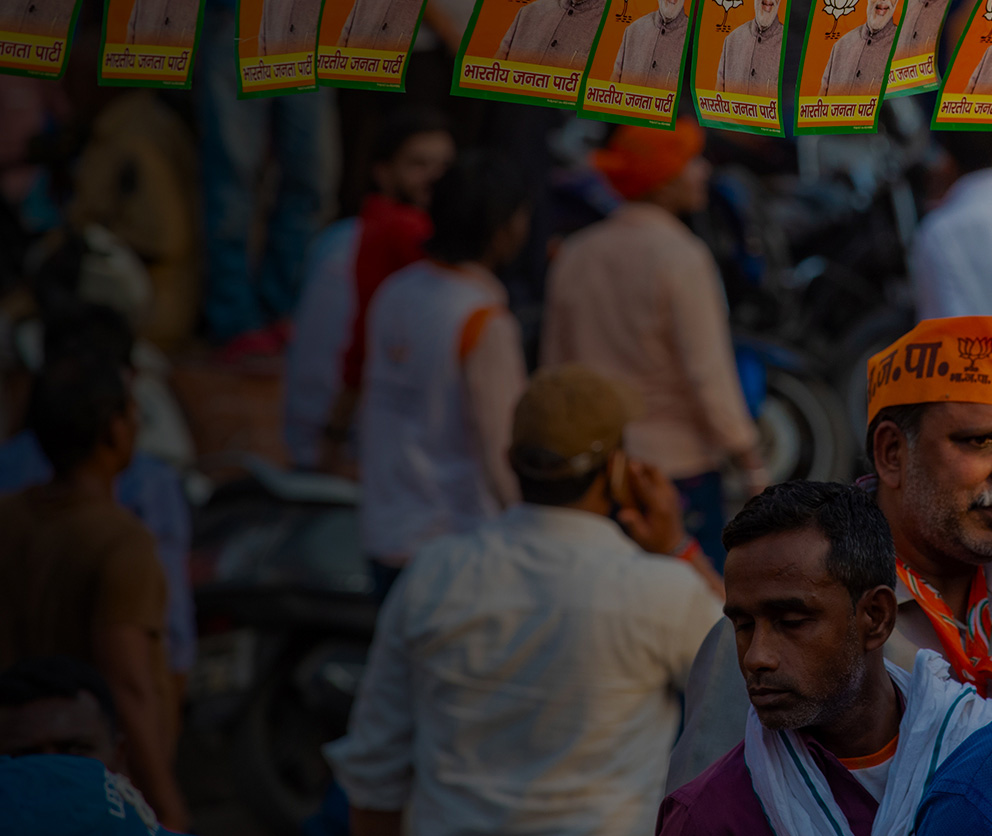Analysing the Bihar Election Result
Proving most exit polls wrong, the National Democratic Alliance (NDA) crossed the mid-way mark in the 243-member Bihar Assembly, winning 125 seats. The Bihar election of 2020 has been especially significant due to several reasons. This is the first state election in the country since the COVID-19 pandemic. What do the results mean for the future of the state and its leaders, particularly Nitish Kumar? How will the verdict affect the course of coalition politics? As young leaders like Tejashwi Yadav and Chirag Paswan emerge, how will the political dynamics in the state change? And what does this verdict tell us about the popularity of BJP and particularly Prime Minister Modi?
Watch (above) the video of the discussion on ‘Analysing the Bihar Election Result’ organised by CPR and the Trivedi Centre for Political Data, Ashoka University (TCPD). The discussion featured Vandita Mishra (Opinion Editor, The Indian Express); Taberez Neyazi (Assistant Professor, National University of Singapore); Gilles Verniers (Co-Director, TCPD & Assistant Professor, Ashoka University and Senior Visiting Fellow, CPR); Neelanjan Sircar (Assistant Professor, Ashoka University and Senior Visiting Fellow, CPR); and Rahul Verma (Fellow, CPR).
Scholars at CPR have closely followed the electoral developments in the Bihar. Read the analysis below:
In Hindustan Times, Rahul Verma analyses how the NDA managed to turn the rising tide against Nitish Kumar, Tejashwi Yadav’s failure to build on the groundswell of support evident in his rallies, and why the exit polls went wrong. Verma writes that the Bihar verdict confirms that elections are won and lost during the campaign and that our focus must remain on understanding the opportunities and constraints each campaign reflects.
In Hindustan Times, Neelanjan Sircar highlights how the tables have turned in the NDA with BJP no longer relying on Nitish Kumar and his JDU to stay in power in Bihar. Sircar writes, in this new era, politics in Bihar will revolve around the competition between a nationally dominant BJP with Modi at the helm and a resurrected RJD led by an ascendant Tejashwi Yadav.
In Economic Times, Gilles Verniers observes that this election confirms a long tradition in Bihar of political fragmentation. He notes that the result shows a vast gap in performance between members of both coalitions. Further, Verniers highlights that local volatility is an important factor contributing to the aggregate outcome.
In Hindustan Times, Gilles Verniers and Samridhi Hooda analyse why women’s representation went down in the Bihar election despite an increase in the number of women candidates from major parties. They highlight that it is only when women find substantial representation across parties that we can hope to see a change.
In Hindustan Times, Neelanjan Sircar analyses the affect of centralisation of welfare by the BJP and Modi. Sircar highlights that the sheer popularity of Modi, and the “vishwas” that voters have placed in him, has changed the way the state-level leaders must do politics.
In a discussion on Mirror Now, Yamini Aiyar and Neelanjan Sircar discuss BJP and JDU’s electoral performance. Aiyar highlights that the BJP’s ability to centralise welfare schemes and mobilise the electorate around it has lead to its success. This she says, left Nitish Kumar facing the consequences of anti-incumbency. Sircar highlights that Nitish Kumar won’t have bargaining power and may have to bend on the will of his alliance partner, given that the BJP has a strike rate of 67%, compared to JDU, which had a strike rate of 37%.
In a discussion on India Today, Rahul Verma highlights key takeaways from the Bihar verdict. He highlights that elections are decided during the campaign phase and the party that remains vigilant to what is happening on the ground wins.
In Hindustan Times, Gilles Verniers and Basim U Nissa analyse the role of caste in Bihar politics. They highlight that the inclusive strategy that most parties claim to follow in Bihar does not ultimately translate into substantial political empowerment of non-dominant groups, which remain fragmented and divided.
In Scroll, Gilles Verniers, Mohit Kumar and Neelesh Agrawal decode the Bihar verdict in 32 charts. They analyse that except for perhaps the Congress, all the other parties can find some reason to be satisfied with the result. Further, they highlight that the NDA won the election by the skin of its teeth and the diminishing popularity of Nitish Kumar almost cost them the election.
In ThePrint, Asim Ali and Ankita Barthwal highlight how the BJP’s success in an assembly election is determined, above all, by its ability — or inability — to make ideological issues salient. They further analyse that the party manages to win handsomely as a challenger, often aligning with non-dominant castes to mount an attack on existing power equations in the state. As an incumbent, however, the BJP has had only a modest showing.
In Scroll, Gilles Verniers, Basim U Nissa, Neelesh Agrawal and Mohit Kumar analyse the profile of the new Bihar assembly. They find that most MLAs are male, fairly well-educated, rich, in contradiction with the law and tend to belong to groups that exert local dominance.


